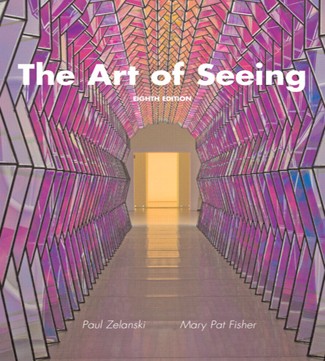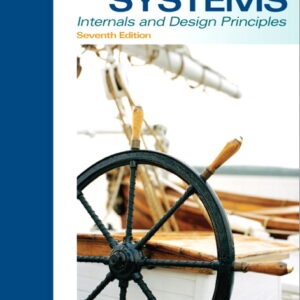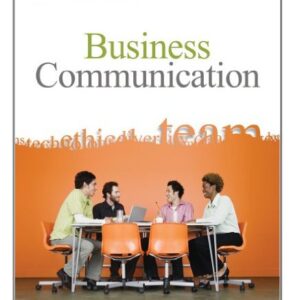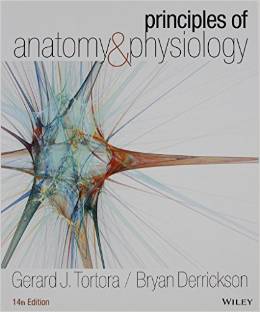The Art of Seeing 8th Edition Zelanski Fisher Test Bank
$35.00
The Art of Seeing 8th Edition Zelanski Fisher Test Bank
978-0205748341
Table of Contents
1. Understanding Art 3
2. Visual Elements 7
3. Organizing Principles of Design 11
4. Drawing 15
5. Painting 19
6. Printmaking 23
7. Graphic Design 27
8. Photography and Filmmaking 31
9. Digital Art 35
10. Sculpture 39
11. Craft Media 44
12. Product and Clothing Design 48
13. Architecture 52
14. Designed Settings 56
15. Historical Styles in Western Art 61
16. Understanding Art on All Levels 66
Part 1: Learning to See
Chapter 1: Understanding Art
Multiple Choice
1. Some artists cannot easily explain why they create art. For them, it is __________.
A. a nightmare
B. just a job
C. an inner calling
D. a constant battle
Answer: C
Page ref: 13
2. Ideals of beauty are __________.
A. universal
B. culturally influenced
C. only found in Classical Greek art
D. impossible to paint
Answer: B
Page ref: 45
3. The meaning found in art, including the subject-matter and the emotions, ideas, and symbols is called
__________.
A. content
B. variety
C. spontaneity
D. predictability
Answer: A
Page ref: 32
4. ___________ is (are) usually necessary for someone to be able to create art from the ideas in his/her
imagination.
A. Luck and prayers
B. Training and practice
C. Money and good connections
D. Paint and pencils
Answer: B
Page ref: 14
5. Maya Ying Lin said she wanted her Vietnam Veterans’ Memorial (fig. 1.29) to be __________.
A. a dark world, like the war itself
B. a reminder to visitors of the government’s role
C. honest about the reality of war
D. none of the above
Answer: C
Page ref: 35
6. For Paul Klee, the act of artistic creation seemed to be a way of approaching __________.
A. the unseen
B. fame
C. the perfect lifestyle
D. political awareness
Answer: A
Page ref: 42
7. When someone pays an artist to create a work of art it is called __________.
A. context
B. political
C. patronage
D. unity
Answer: C
Page ref: 37
8. In the formalist approach the chief emphasis to judging quality in art is on __________.
A. attending high-quality art auctions
B. following the rules set forth by the Academy
C. how the artist manipulates elements of design
D. being a recognized art critic
Answer: C
Page ref: 48
9. The Palace at Versailles (fig. 1.30) symbolizes __________.
A. the size of the royal family
B. the power of the absolute monarch
C. a central meeting place for the French people
D. democracy in seventeenth-century France
Answer: B
Page ref: 35
10. For Koreans , cloth-bound bundles known as bottari are used for__________.
A. giving old clothes to the poor
B. packing up possessions and leaving the home
C. doing household chores
D. caring for a baby
Answer: B
Page ref: 43
11. Vera Mukhina’s Machine Tractor Driver and Collective Farm Girl (fig. 1.27) is an example of
__________.
A. a genre scene
B. sociopolitical content
C. abstraction
D. capitalism
Answer: B
Page ref: 33
12. Three-dimensional artworks have __________.
A. height, width, and depth
B. three sides
C. three-point perspective
D. three vantage points
Answer: A
Page ref: 16
13. The work, Ancestors of the Passage: A Healing Journey through the Middle Passage (fig. 1.46) by
__________ treats the subject of slavery and its effects on women.
A. Chris Ofili
B. Susumu Kinoshita
C. Diego Rivera
D. Imna Arroyo
Answer: D
Page ref: 50-51
14. Idealization in art is a form of __________.
A. abstraction
B. hero worship
C. realism
D. deep thinking
Answer: C
Page ref: 18-19
15. An artist who uses abstraction as an approach is __________.
A. using mathematical formulas to figure out composition
B. extracting the essence of the real object
C. faithfully representing the physical appearance of an object
D. painting on a very small scale
Answer: B
Page ref: 20
16. Piet Mondrian’s Composition (B) En Bleu, Jaune, et Blanc (Composition in Blue, Yellow,
and White) (fig. 1.14) is an example of __________.
A. natural-looking landscape
B. nonobjective, or nonrepresentational, painting
C. a Rococo painting style
D. dramatic use of light and shadow
Answer: B
Page ref: 20
17. The first purpose of the applied arts is to __________.
A. serve some useful function
B. enable the artist to get a job
C. create artworks for museums
D. maintain traditional art forms
Answer: A
Page ref: 24
18. Wanting to stop art from being shown because of moral beliefs is called __________.
A. commissioning
B. authorship
C. funding
D. censorship
Answer: D
Page ref: 30-31












Reviews
There are no reviews yet.